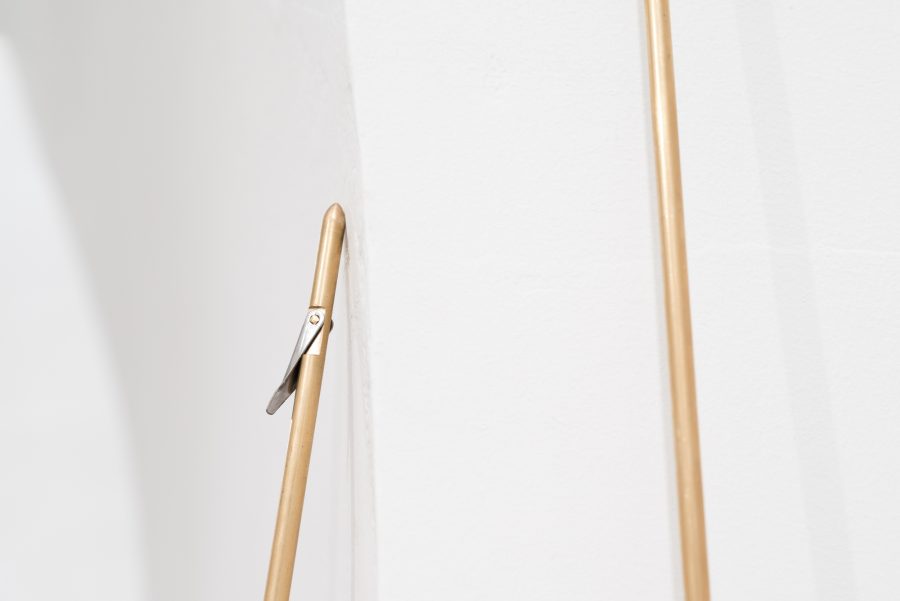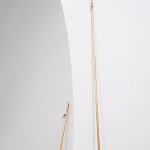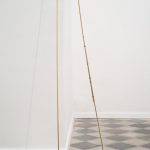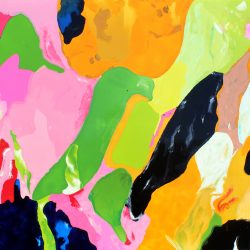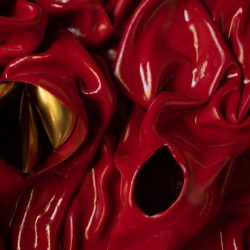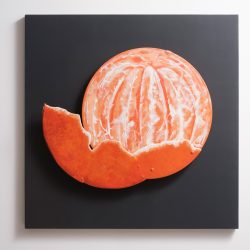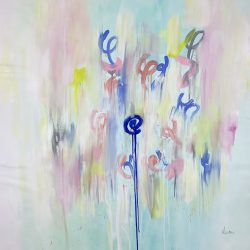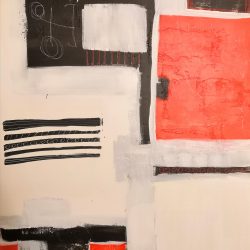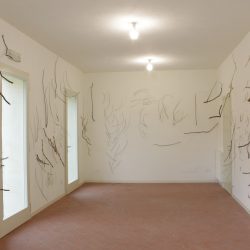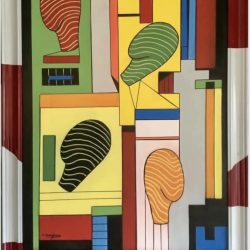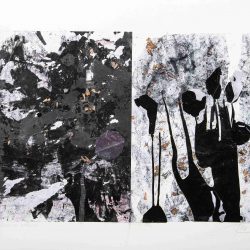work
The disease of more
| category | Sculpture |
| subject | Political / Social, Abstract |
| tags | minimale, altezza, arpione, ottone |
| base | 50 cm |
| height | 250 cm |
| depth | 30 cm |
| year | 2023 |
Brass bars, stainless steel, rubber bands
Two brass bars of the same length, ending with two small harpoons, are placed vertically against a corner to compete for “height”.
One of them prevails over the other by extending itself with a brass “crutch” held by some elastics.
In a precarious “overtaking”, the competitive ascent reveals its fragility.
The title “The disease of more” is a phrase originally coined by Pat Riley, an internationally renowned coach who has led six teams to NBA championships.
Riley stated that “the disease of more” explains why winning teams are often overwhelmed, not by better teams, but by internal dynamics within the organization.
Players, like most people, want “more”. At first, that “more” was winning the championship. But once the players have that championship, it is no longer enough. The “more” becomes something else: more money, more TV spots, more awards, more playing time, more demanded shows, more media attention, and so on.
Some psychologists call this constant search for pleasure the “hedonic treadmill” because people who are constantly looking for a “better life” end up making a lot of effort to then find themselves back in the initial stage.
Two brass bars of the same length, ending with two small harpoons, are placed vertically against a corner to compete for “height”.
One of them prevails over the other by extending itself with a brass “crutch” held by some elastics.
In a precarious “overtaking”, the competitive ascent reveals its fragility.
The title “The disease of more” is a phrase originally coined by Pat Riley, an internationally renowned coach who has led six teams to NBA championships.
Riley stated that “the disease of more” explains why winning teams are often overwhelmed, not by better teams, but by internal dynamics within the organization.
Players, like most people, want “more”. At first, that “more” was winning the championship. But once the players have that championship, it is no longer enough. The “more” becomes something else: more money, more TV spots, more awards, more playing time, more demanded shows, more media attention, and so on.
Some psychologists call this constant search for pleasure the “hedonic treadmill” because people who are constantly looking for a “better life” end up making a lot of effort to then find themselves back in the initial stage.



